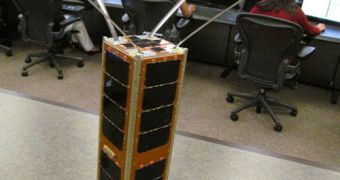Rather than relying on large, vulnerable espionage, surveillance and monitoring satellites, the United States Army now prefers focusing its funding on the development of large constellation of miniature, extremely-cheap satellites.
The role of such constellations would be to serve soldiers on the ground, providing them with timely information about the battlefield they are operating in. Spokespersons for the Army say that this shift in the Pentagon's view was caused by a change in the way warfare is carried out.
The time of great, head-on confrontations has long since passed, experts say. Guerrilla operations are now the closest thing to a war, and the logistics that carrying out such operations entail are considerably different from the ones implied by standard warfare.
For about ten years now, American soldiers have been engaged in gunfights with elusive groups of enemies, in rough terrain, often fighting in very small, elite groups. Gone are the days when numerous infantry squads would attack entrenched enemies.
In order to reduce the difficulty and danger of such operations, the US Army wants to give its soldiers the ability to see the battlefield in exquisite detail. This will allow warfighters to carry out their operations with increased odds of success.
Army officials announced that its first nanosatellite was launched in December 2010, more than 60 years after its last satellite launch. Pentagon representatives are now saying that more such spacecraft will be installed on orbital perches soon, Space reports.
“We think you can put an awful lot of capability in a very small package. We're moving down that road as quickly as we can,” explained Army official John London, during a presentation held at the 2011 International Space Development Conference in Huntsville, Alabama, over the weekend.
London is the manager of the nanosatellite technology programs at the US Army's Space and Missile Defense Command (SMDC). The Army also has large, expensive satellites in space.
The satellites currently under development “are very small. They're very hard to track and, more than likely, very hard to target,” London said, hinting at the satellite-annihilation capabilities that countries such as China now have.

 14 DAY TRIAL //
14 DAY TRIAL //